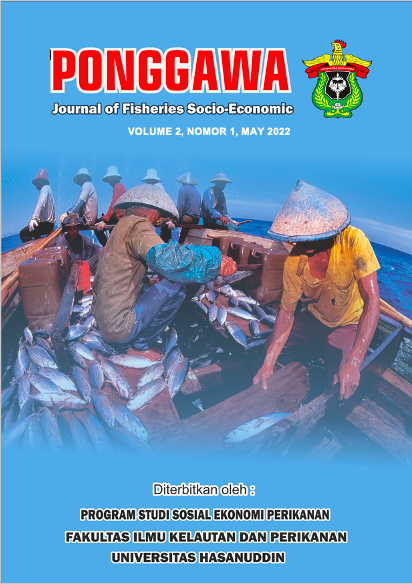Analysis of the Relation of Sape Fish Landing Places on Improving the Welfare of the Fisherman Community (Case Study in Bugis Village, Sape District, Bima Regency)
DOI:
https://doi.org/10.35911/ponggawa.v2i1.20567Abstract
This study aims to determine (1) the role of Fish Landing Places on improving the welfare of fishing communities (2) the process of trading fish at Sape Fish Landing Places, and (3) the advantages and disadvantages of Sape Fish Landing Places. This research was conducted in December 2021 at the Sape Fish Landing Place. The type of research used is field research, this research is qualitative and quantitative. The sampling method is purposive sampling. The sample in this study was the fishing community and the manager of the Sape Fish Landing Place. The data sources are primary data and secondary data. Data collection techniques through in-depth interviews using questionnaires, observation and documentation. The data analysis used in this research is descriptive qualitative. The data on the role of the Sape Fish Landing Place was processed using a 4-point Likert Scale. The results of this study indicate that the institutional role of the Sape Fish Landing Place is to have a role as a landing and loading and unloading place for fishermen's catch, a place for marketing and distribution of fisherman's catch, a center for developing fishing communities that have a fairly good level of role. The role of the Sape Fish Landing Place as a place for fish quality development has a good level of role and as a place for fishing vessels to have a very good level of role. The existence of the Sape Fish Landing Place as a forum for fishing communities to carry out activities to improve their lives. The process of trading fish at the Sape Fish Landing Place is a primary commodity trading activity and wholesale trade. The advantages and disadvantages of the Sape Fish Landing Place are that the fish trade process takes place in a simple and peaceful manner, while the drawback of the Sape Fish Landing Place is that the facilities and infrastructure are still lacking.


